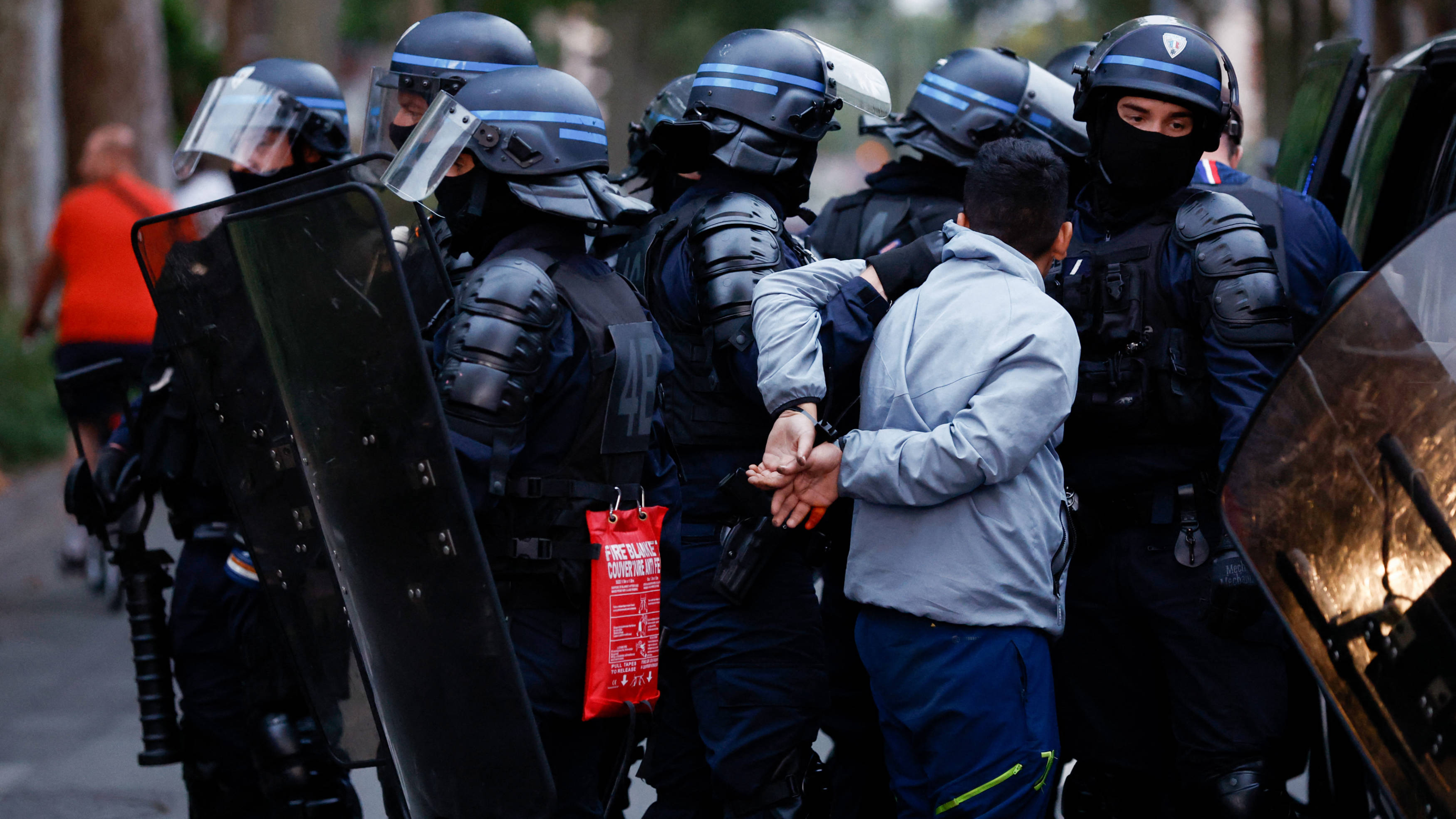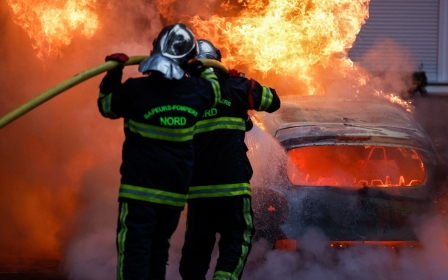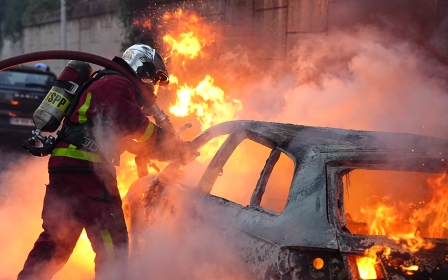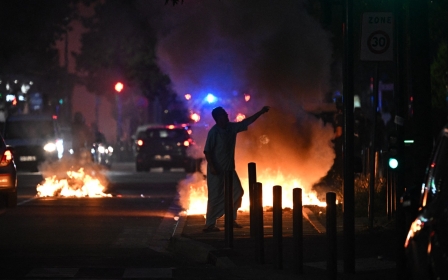In France's suburbs, young people are ready to confront police
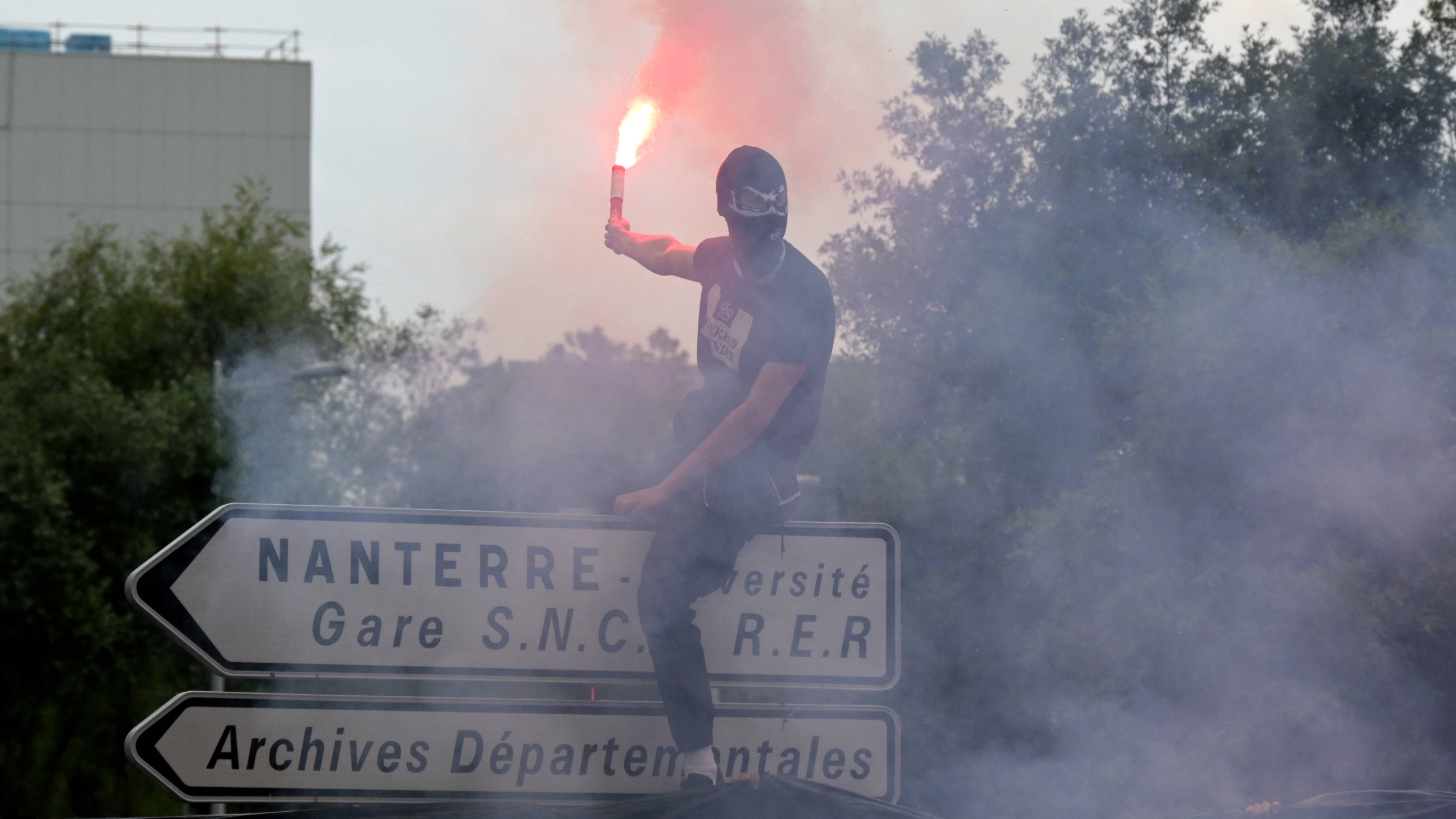
In the vast neighbourhood of La Grande Borne in Grigny, 30km south of Paris, the atmosphere is heavy.
The mood has been charged with a deafening anger, on the verge of exploding and destroying everything, since 17-year-old Nahel M was killed by police on Tuesday morning.
Young people ready to confront the police are not afraid of anything. They want to be heard.
"If we don't move, the police won't stop. We are not going to be shot like rabbits," Moussa, a 16-year-old boy who lives in the city, tells Middle East Eye.
Around him, a group forms. Boys his age talk with great excitement about the bus set on fire the night before not far from the neighbourhood, on the border with the town of Viry-Chatillon. They filmed the scene with their mobile phones.
Stay informed with MEE's newsletters
Sign up to get the latest alerts, insights and analysis, starting with Turkey Unpacked
"We are accused of violent acts. Some do not understand why we attack buses or schools. My own mother begs me to stay home and not get into trouble, but it's stronger than me," says Moussa.
"When I learned of Nahel's death, all the rage I had inside came back. I can no longer control it."
Nahel M was killed by a gunshot to the chest during a roadside check by two police officers in Nanterre, west of the capital, after refusing to comply with orders.
According to a video footage, one of the officers drew his gun and fired at point-blank range when Nahel re-started his engine. The officer has since been detained and charged with voluntary homicide.
The teenager's death has led to four consecutive nights of violence in France, particularly in the Paris region. Hundreds of people have been arrested across the country, according to Interior Minister Gerald Darmanin, "most of whom" are aged 14 to 18.
Poverty, unemployment and discrimination
Kylian, Moussa's childhood friend, nods in agreement. Beneath his Nike cap, he hides a dark look that betrays a deep feeling of revolt. He has not slept since he saw the video of Nahel being killed.
"It's as if he was hunting and killing an animal in cold blood," says Kylian.
In Grigny, the closest police station to La Grande Borne, a vast housing estate, is a five-minute drive away. Relations have always been tense between the young people of the neighbourhood and the police.
For the police, Grande Borne is a hub of drug trafficking, while in the eyes of its residents it is a cesspool of poverty.
'When I learned of Nahel's death, all the rage I had inside came back. I can no longer control it'
- Moussa, 16
More than 15,000 people live in the estate, sharing 3,685 public housing units built in the 1960s and 70s.
Originally designed to accommodate residents of Parisian slums, the neighbourhood is now home to a large immigrant population living in very precarious social conditions, with very high dropout and unemployment rates.
In 2005, Grande Borne experienced violent riots following the death in Seine-Saint-Denis of two teenagers, Zyed Benna and Bouna Traore, inside an electrical substation while they were trying to flee from the police.
Born two year later, Moussa and Kylian know this story well. It reverberates with their own reality and experiences. Since entering secondary school, they no longer count the number of facial checks by the police they have undergone.
"At the RER [rail system] station, in the city, at the stadium... ", says Moussa.
'What have we done for them?'
A year after the riots of 2005, an identity check in a shisha bar in La Grande Borne once again inflamed already high frustration. Groups of young people burned cars in the parking lot of the Grigny shopping centre to protest against police brutality.
At the time, Ahmed, then in his 30s, was in the cafe when the CRS riot police went in, mistreated him and ordered, without valid justification, the closure of the establishment.
"It was pure provocation. Whatever we do, we are guilty," says Ahmed, now the father of two children.
His 14-year-old eldest, he says, struggles at school and "has no motivation".
"At his age, he already feels racism. When he meets the police, he is scared because he always feels like he has something to be ashamed of."
For Ahmed, La Grande Borne is like an open-air prison where residents are condemned for offences of race and poverty.
"Everyone complains about the drug trade and the violence of young people in the neighbourhood. But what have we done for them? The state, which has neglected them, considers them potential criminals," he says.
In 2016, six young people from La Grande Borne were wrongly accused of attacking two police vehicles with Molotov cocktails. After years of proceedings and incarceration, a court has just cleared them and offered compensation.
In the arms of drug kingpins
For Khadidja, a mother and resident of the neighbourhood, however, the damage has already been done.
"Some of them were just teenagers when they went to prison. They have been robbed of a part of their life. What are they going to do without degrees? There is nothing waiting for them at La Grande Borne," she says.
In the neighbourhood, idleness and lack of money push people, especially the youth, into the arms of drug kingpins.
"From my window, I see children as young as 12 playing lookouts. They monitor the arrival of the police for 10 euros [$11] that they will spend at McDonald's. I am sad because I know they will one day end up in prison," Khadidja says.
When she arrived with her family in the neighbourhood 30 years ago, the area had already degenerated, a site left abandoned.
"The only state agents we know of are the police," she says, deploring the brutal, traumatic interventions.
To open up La Grande Borne and other sensitive neighbourhoods, public authorities set up an urban renewal programme in 2004 that involved building numerous facilities and the development of social diversity.
The day Nahel was killed, the initiator of the project, the former minister delegate for the city, Jean-Louis Borloo, went to Grigny to see the achievements that had been made: a media centre, a sports academy, a vocational training centre, a centre for associations, a health centre and others.
He was still wandering the alleys of La Grande Borne when news of the boy's death began making the rounds in the media. For the communist mayor of Grigny, Philipe Rio, who accompanied him, the tragedy shows that nothing is settled in housing estates.
In 2017, Rio signed an appeal with other elected officials to request more resources, believing that the city's policy for working-class neighbourhoods had "entered a critical phase and despair".
In Grigny, nearly half of the inhabitants live below the poverty line.
This article was originally published on Middle East Eye's French website.
Middle East Eye delivers independent and unrivalled coverage and analysis of the Middle East, North Africa and beyond. To learn more about republishing this content and the associated fees, please fill out this form. More about MEE can be found here.



